Founder
USER IS OFFLINE
Years
Old
Female
"'Death had never looked so dead ... only death covering the dead.' You think the victim was dead?"
11 POSTS & 0 LIKES
|
Post by Cᴀᴎɪs on May 14, 2014 23:55:52 GMT -5
Table of Contents
{Table of Contents & Search Keys} Press CTRL+F
- The Basic Responsibilities (brsp)
- Healing the Clan (heal)
- Interpreting Omens (omen)
- Herb Gathering (hbgt)
- Herb Harvesting (hbhv)
[li]A Warning (mcwr) [/li] [/ul] [li] Training an Apprentice (trna)[/li] - Training Sessions (mses)
- Prerequisites For Full Medicine Cat Name (prmn)
[li] Herb Index (herb)[/li] [/ul][/blockquote][/spoiler]
|
|
Founder
USER IS OFFLINE
Years
Old
Female
"'Death had never looked so dead ... only death covering the dead.' You think the victim was dead?"
11 POSTS & 0 LIKES
|
Post by Cᴀᴎɪs on May 15, 2014 0:17:25 GMT -5
The Basic Responsibilities
(brsp)
+ + + + + + +
Healing the Clan
(heal)
For information on healing sick and injured cats, see this thread.
One of the responsibilities that comes with being a medicine cat is healing the sick and injured cats of all of the Clans, primarily their own. They must know how to use what herbs when, or the consequences could range from mild discomfort to a fatality.
For a full list of herbs and their uses, press CTRL+F and type in (herb) or click this link for the Herb Index.
Interpreting Omens (omen)
If there is an impending disaster, the Clan may have dire need of a medicine cat who can receive and interpret signs from StarClan. It is for this reason that all medicine cats are assumed to have the deepest connection with their starry ancestors.
For more information on communicating with StarClan, please see this thread. Herb Harvesting
(hbhv)
To harvest an herb successfully, a number things must be taken into consideration: ❦ Is the said herb ready for harvesting?
❦ Is the cat harvesting said herb using their claws or their teeth?
❦ Is the season a dry season, when the herb's parts are more likely to be dry and susceptible to crumbling?
❦ Does the cat harvesting said herb have a high enough Harvest skill to do so without damaging it? Whichever way these questions are answered, a staff member will roll a single 10-sided die or a medicine cat apprentice, and a single 25-sided die for the average medicine cat.
A Warning (mcwr)
If a medicine cat falls in love and takes a mate and has kits, they will immediately be forced out of their role if any cat finds out in RP. The medicine cat then has three [ 3 ] real-life months to pass the skills onto a chosen replacement. ❦ If the medicine cat already has an apprentice, the apprentice gains their full title and position automatically.
|
|
Founder
USER IS OFFLINE
Years
Old
Female
"'Death had never looked so dead ... only death covering the dead.' You think the victim was dead?"
11 POSTS & 0 LIKES
|
Post by Cᴀᴎɪs on May 15, 2014 0:19:15 GMT -5
Training an Apprentice
(trna)
+ + + + + + +
Training Sessions (mses)
|
|
Founder
USER IS OFFLINE
Years
Old
Female
"'Death had never looked so dead ... only death covering the dead.' You think the victim was dead?"
11 POSTS & 0 LIKES
|
Post by Cᴀᴎɪs on May 15, 2014 0:24:04 GMT -5
Herb Index
(herb)
+ + + + + + +
Fever ReducersBorage Leaves Taken orally. Also see "Misc. Medicine". To be chewed and eaten. The plant can be distinguished by its small blue or pink star-shaped flowers and hairy leaves. Helps bring down fevers, and also helps to increase a nursing queen's supply of milk. |  |
Feverfew Taken orally. Also see "Pain Relievers". 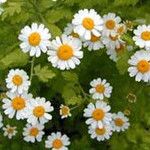 | A small bush with flowers like daisies. The leaves can be eaten to cool down body temperature, particularly for cats with fever or chills. Heals aches and pains, and is especially good for headaches. |
Lavender Taken via inhalation. A small purple flowering plant. Place under a cat's nose to be inhaled constantly. Cures fever and chills -- also used to hide the scent of death. |  |
Burdock Root Applied directly to the wound. Also see "Remedies For Infection".
A tall-stemmed, sharp-smelling thistle with dark leaves. A medicine cat must dig up the roots, wash off the dirt, and chew them to a pulp. This can be applied to rat bites to soothe pain and prevent or treat infection.
|  |
Feverfew Taken orally. Also see "Fever Reducers".  | A small bush with flowers like daisies. The leaves can be eaten to cool down body temperature, particularly for cats with fever or chills. Heals aches and pains, and is especially good for headaches. |
Dock Apply poultice to wounds. Also see "Herbs For Battle Injuries". Soothes scratches and sore pads. May sting when applied. If placed in a cat's nest, it can ease the pain of wounds. | 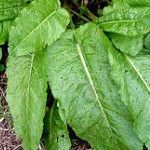 |
Burdock Root Applied directly to the wound. Also see "Pain Relievers".
A tall-stemmed, sharp-smelling thistle with dark leaves. A medicine cat must dig up the roots, wash off the dirt, and chew them to a pulp. This can be applied to rat bites to soothe pain and prevent or treat infection.
|  |
Chervil Leaves Root is taken orally for stomach aches. Apply juice of the leaves to infected wounds. Also see "Stomach-Soothers". 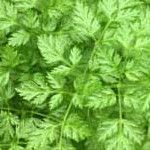 | A sweet-smelling plant with large, spreading, fern-like leaves and small white flowers. The juice of the leaves can be used for infected wounds or the roots for bellyaches. |
Dried Oak Leaf Apply poultice to the wound. Collected in Leaf-Fall and stored in a dry place. Chew into thick poultice and spread on wounds to keep infection from setting in. | 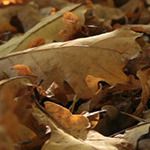 |
Honey Taken orally. Also see "Cough-Curers". 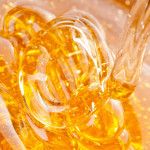 | A sweet, golden liquid created by bees. To be eaten. Difficult to collect without getting stung, but great for soothing infections or the throats of cats who have breathed in smoke. Also helps soothe coughing, helps with the taste of other concoctions, and gives energy. |
Horsetail Apply poultice to wounds. Also see "Herbs for Battle Injuries". A tall plant with bristly stems that grows in marshy areas. Usually chewed up and applied as a poultice to wounds. Treats infections and stops bleeding. |  |
Marigold Apply poultice to wounds. Also see "Herbs For Battle Injuries".  | A bright orange or yellow flower that grows low to the ground. The petals or leaves can be chewed into a pulp and applied as a poultice to wounds. Stops infection and stops bleeding. Good for treating inflammation of stiff joints. |
Wild Garlic Applied by rolling in a patch. Roll in a patch to help prevent infection, especially for dangerous wounds like rat bites. |  |
Catmint Taken orally. Also see "Misc. Medicine". Also known as Catnip. A delicious-smelling, leafy plant that's hard to find in the wild; often found growing in Twoleg gardens. This is the best remedy for Greencough, but can also be used for Whitecough. |  |
Coltsfoot Taken orally. Also see "Misc. Medicine".  | A flowering plant. It's a bit like a dandelion, with yellow or white flowers. The leaves can be chewed into a pulp, which is eaten to help shortness of breath. Also helps with cracked or sore pads. |
Juniper Berries Taken orally. Also see "Herbs For Battle Injuries", "Stomach Soothers", and "Misc. Medicine". A bush with spiky dark green leaves and purple-blue berries. To be chewed and eaten. Soothes bellyaches, gives strength, and helps troubled breathing. It's also used to help calm cats. | 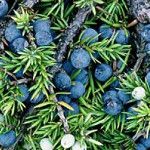 |
Tansy Taken orally in small doses. Also see "Misc. Medicine".  | A strong-smelling plant with round yellow flowers. Good for curing coughs and soothing throats, but must be eaten in small doses. Can also be used to cure wounds and poisons. Can help keep cats from getting Greencough. |
Chervil Root Taken orally. Also see "Remedies For Infection". A sweet-smelling plant with large, spreading, fern-like leaves and small white flowers. The juice of the leaves can be used for infected wounds or the roots for bellyaches. |  |
Juniper Berries Taken orally. Also see "Herbs For Battle Injuries", "Cough Curers", and "Misc. Medicine".  | A bush with spiky dark green leaves and purple-blue berries. To be chewed and eaten. Soothes bellyaches, fives strength, and helps troubled breathing. It's also used to help calm cats. |
Watermint Taken orally. A leafy green plant fount in streams or damp earth. Usually chewed into a pulp, then fed to a cat suffering from a bellyache. |  |
Cobweb Applied to wounds. Found all over the forest. Medicine cats wrap it around an injury to soak up the blood and keep the wound clean. | 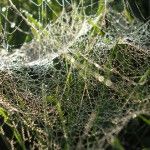 |
Horsetail Apply poultice to wounds. Also see "Remedies For Infections".  | A tall plant with bristly stems that grows in marshy areas. Usually chewed up and applied as a poultice to wounds. Treats infections and stops bleeding. |
Marigold Apply poultice to wounds. Also see "Remedies For Infections". A bright orange or yellow flower that grows low to the ground. The petals or leaves can be chewed into a pulp and applied as a poultice to wounds. Stops infection and stops bleeding. Good for treating inflammation of stiff joints. |  |
Comfrey Apply poultice to wounds. Also see "Misc. Medicine". 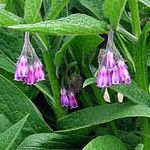 | Identifiable by its large leaves and small bell-shaped flowers, which can be pink, white or purple. Chew the plant's fat black roots into a poultice to mend broken bones or soothe wounds. Can also help soothe wrenched claws, itching, or inflammation of stiff joints. |
Goldenrod Apply poultice to wounds. A tall plant with bright yellow flowers. Make a poultice to heal wounds. |  |
Stinging Nettle Seeds taken orally, apply leaf poultice to wounds.  | Seeds induce vomiting to treat cats that swallowed poison. The leaves are chewed into a poultice that helps bring down swelling. |
Poppy Seed Taken orally. Small black seeds shaken from a dried poppy flower. Feed to cats to help them sleep. Soothes cats suffering from shock and distress, and helps to dull pain. Not recommended for nursing queens. | 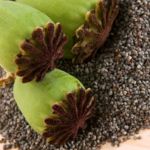 |
Thyme Taken orally. 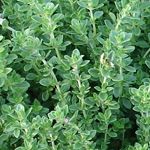 | Leaves can be eaten to calm anxiety and frayed nerves. |
Dock Apply poultice to wounds. Also see "Pain Relievers". Soothes scratches and sore pads. May sting when applied. If placed in a cat's nest, it can ease the pain of wounds. |  |
[presto]  Dried Oak Leaf Collected in Leaf-Fall and stored in a dry place. Chew into thick poultice and spread on wounds to keep infection from setting in.
[/presto] [presto]  Honey A sweet, golden liquid created by bees. To be eaten. Difficult to collect without getting stung, but great for soothing infections or the throats of cats who have breathed in smoke. Also helps soothe coughing, helps with the taste of other concoctions, and gives energy. Also see "Cough-Curers".
[/presto] [presto]  Horsetail A tall plant with bristly stems that grows in marshy areas. Usually chewed up and applied as a poultice to wounds. Treats infections and stops bleeding. Also see "Herbs For Battle Injuries".
[/presto] [presto]  Marigold A bright orange or yellow flower that grows low to the ground. The petals or leaves can be chewed into a pulp and applied as a poultice to wounds. Stops infection and stops bleeding. Good for treating inflammation of stiff joints. Also see "Herbs For Battle Injuries".
[/presto] [presto]  Wild Garlic Roll in a patch to help prevent infection, especially for dangerous wounds like rat bites.
[/presto] Cough Curers[presto]  Catmint Also known as Catnip. A delicious-smelling, leafy plant that's hard to find in the wild; often found growing in Twoleg gardens. This is the best remedy for Greencough, but can also be used for Whitecough. [/presto] [presto]  Coltsfoot A flowering plant. It's a bit like a dandelion, with yellow or white flowers. The leaves can be chewed into a pulp, which is eaten to help shortness of breath. Also helps with cracked or sore pads. Also see "Misc. Medicine". [/presto] [presto]  Juniper Berries A bush with spiky dark green leaves and purple-blue berries. To be chewed and eaten. Soothes bellyaches, fives strength, and helps troubled breathing. It's also used to help calm cats. Also see "Herbs For Battle Injuries", "Stomach Soothers", and "Misc. Medicine".
[/presto] [presto]  Tansy A strong-smelling plant with round yellow flowers. Good for curing coughs and soothing throats, but must be eaten in small doses. Can also be used to cure wounds and poisons. Can help keep cats from getting Greencough. Also see "Misc. Medicine". [/presto] Stomach Soothers[presto]  Chervil Root A sweet-smelling plant with large, spreading, fern-like leaves and small white flowers. The juice of the leaves can be used for infected wounds or the roots for bellyaches. Also see "Remedies For Infection". [/presto] [presto]  Juniper Berries A bush with spiky dark green leaves and purple-blue berries. To be chewed and eaten. Soothes bellyaches, fives strength, and helps troubled breathing. It's also used to help calm cats. Also see "Herbs For Battle Injuries", "Cough Curers", and "Misc. Medicine".
[/presto] [presto]  Watermint A leafy green plant fount in streams or damp earth. Usually chewed into a pulp, then fed to a cat suffering from a bellyache.
[/presto] Herbs For Battle Injuries[presto]  Cobweb Found all over the forest. Medicine cats wrap it around an injury to soak up the blood and keep the wound clean. [/presto] [presto]  Horsetail A tall plant with bristly stems that grows in marshy areas. Usually chewed up and applied as a poultice to wounds. Treats infections and stops bleeding. Also see "Remedies For Infection".
[/presto] [presto]  Marigold A bright orange or yellow flower that grows low to the ground. The petals or leaves can be chewed into a pulp and applied as a poultice to wounds. Stops infection and stops bleeding. Good for treating inflammation of stiff joints. Also see "Remedies For Infection".
[/presto] Misc. Medicine[presto]  Yarrow A flowering plant whose leaves can be made into a poultice and applied to wounds or scratches to expel poison. May also be eaten if poison has been ingested. [/presto] [/div]
|
|